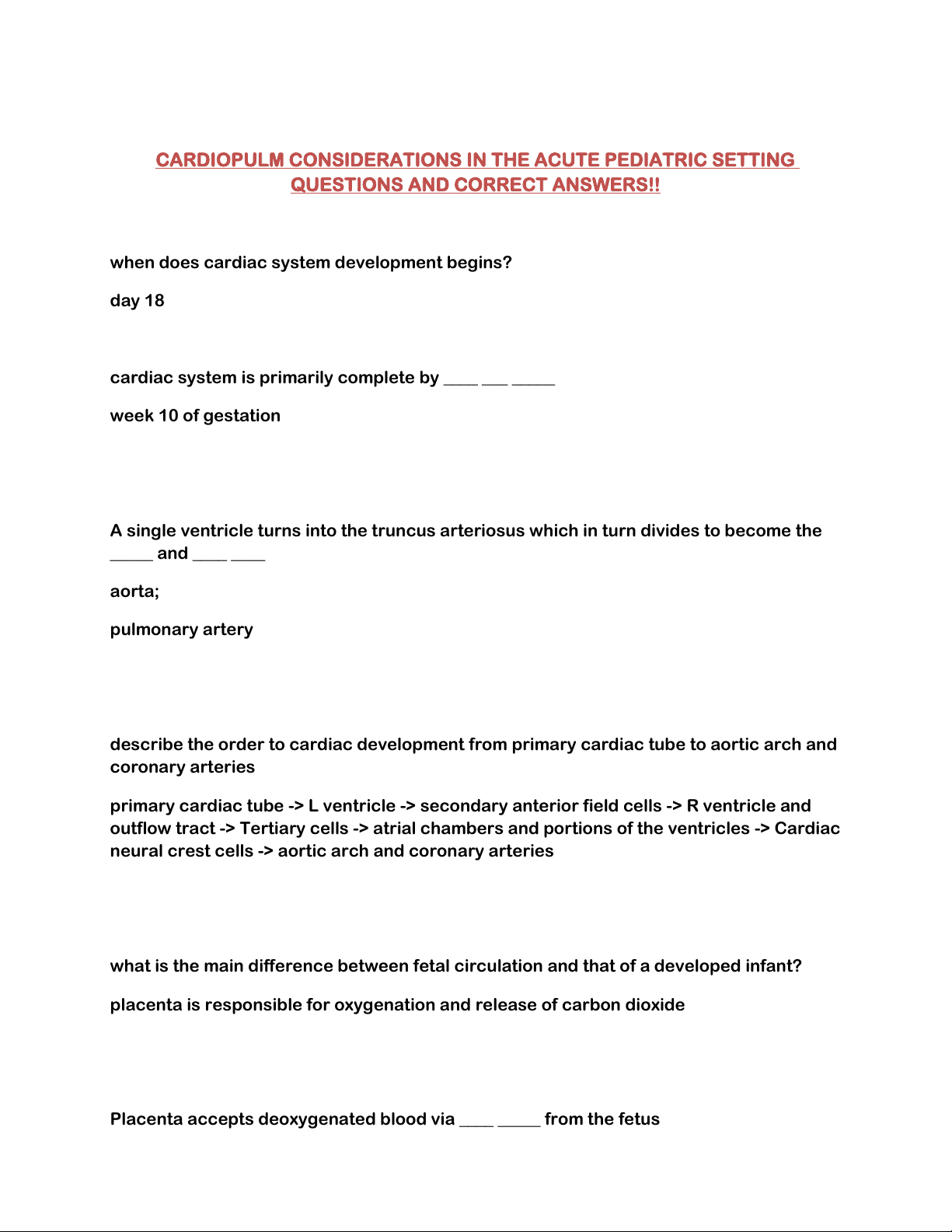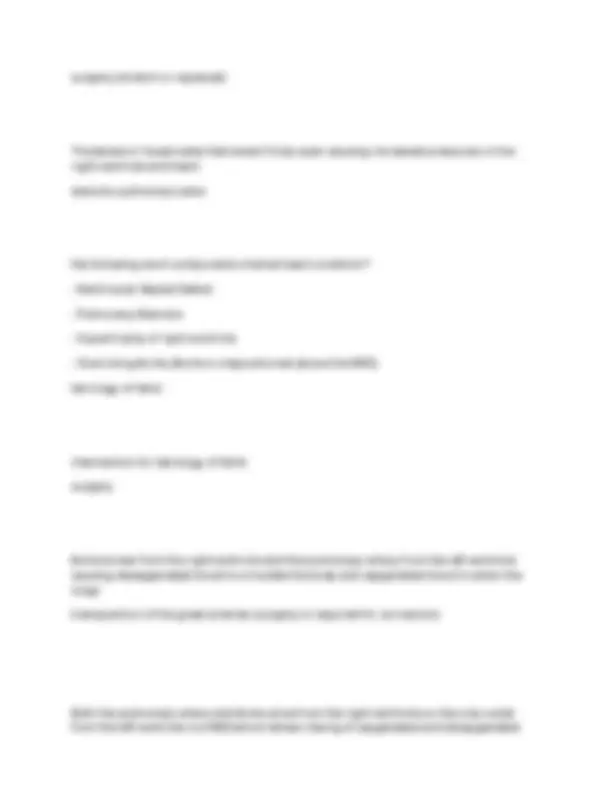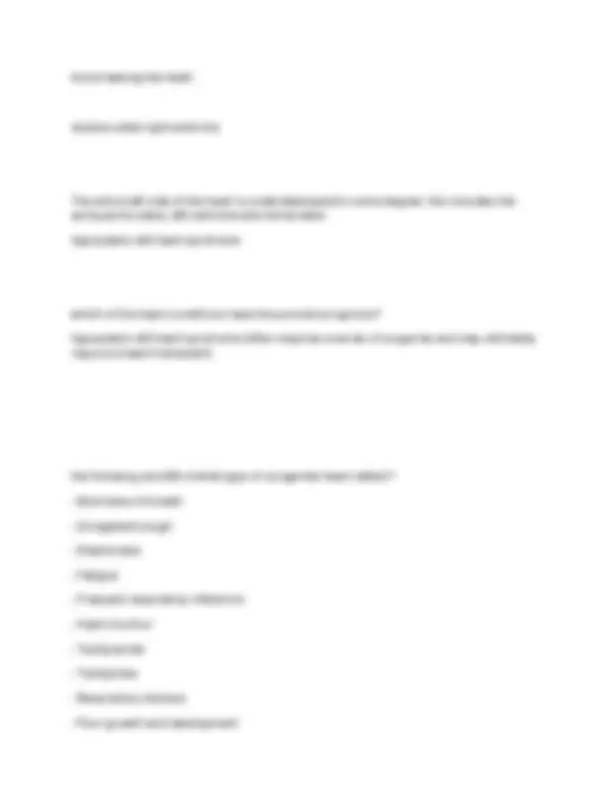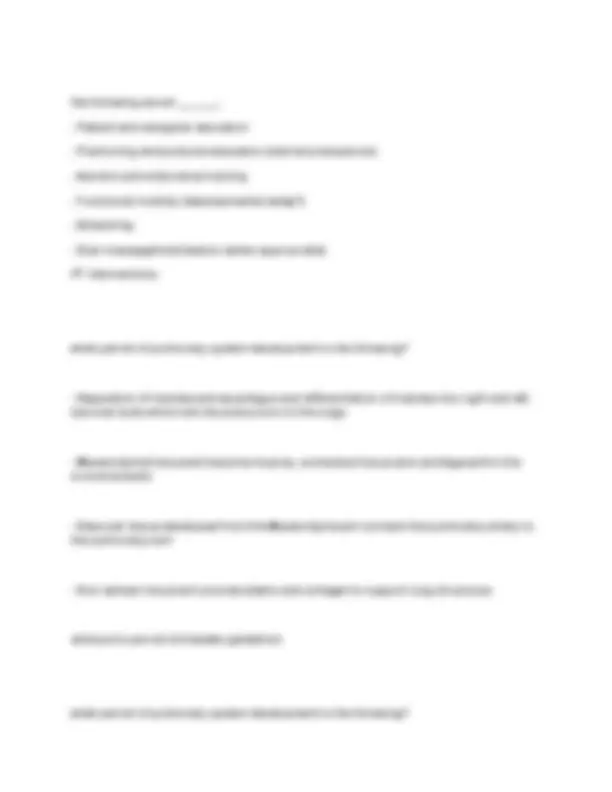













Study with the several resources on Docsity

Earn points by helping other students or get them with a premium plan


Prepare for your exams
Study with the several resources on Docsity

Earn points to download
Earn points by helping other students or get them with a premium plan
Community
Ask the community for help and clear up your study doubts
Discover the best universities in your country according to Docsity users
Free resources
Download our free guides on studying techniques, anxiety management strategies, and thesis advice from Docsity tutors
A comprehensive overview of cardiopulmonary considerations in acute pediatric settings, focusing on congenital heart defects and pulmonary system development. it details various types of congenital heart defects, their classifications, symptoms, interventions, and long-term implications. furthermore, it explores the stages of pulmonary system development, offering a detailed understanding of the embryonic, pseudoglandular, canalicular, and saccular periods. The information is presented in a question-and-answer format, making it ideal for students and professionals alike.
Typology: Exams
1 / 19

This page cannot be seen from the preview
Don't miss anything!












when does cardiac system development begins? day 18
cardiac system is primarily complete by ____ ___ _____ week 10 of gestation
A single ventricle turns into the truncus arteriosus which in turn divides to become the _____ and ____ ____ aorta; pulmonary artery
describe the order to cardiac development from primary cardiac tube to aortic arch and coronary arteries primary cardiac tube -> L ventricle -> secondary anterior field cells -> R ventricle and outflow tract -> Tertiary cells -> atrial chambers and portions of the ventricles -> Cardiac neural crest cells -> aortic arch and coronary arteries
what is the main difference between fetal circulation and that of a developed infant? placenta is responsible for oxygenation and release of carbon dioxide
Placenta accepts deoxygenated blood via ____ _____ from the fetus
umbilical arteries
Placenta oxygenates the blood and returns it to the fetus via ____ ____ umbilical vein
Oxygenated blood passes through the liver and enters the ____ side of the heart right
oxygenated blood flow in the fetus: R atrium -> L atrium (via foramen ovale) -> left ventricle -> aorta -> brain
term used to describe any heart defect that is present at birth congenital heart disease
(considered to be moderate to severe occurs in 2.5-3 of every 1000 births with mild occurring in every 10 of 1000 births)
85% of infants born with CHD will survive to ______ adulthood
how are congenital heart defect classified by? (3) direction of altered flow;
level of severity;
if the oxygenation process is altered
oxygen rich and oxygen poor blood mixes so tissues of the body receive deoxygenated blood (cause of blueish skin tint) cyanotic
acyanotic is related to ____ or ____ related issues volume; pressure
patent ductus arteriosus is most common in ___ ____ premature infants
patent ductus arteriosus (PDA) implications:
congestion
symptoms associated with PDA: (2) increased RR and WOB; decreased growth (due to energy expenditure)
interventions for small and large PDA: small: may close spontaneously;
large: SURGERY
what can increased pressure with atrioventricular canal defect lead to? long term vessel damage
coarctation of the aorta
CHF; BP
poorly working valve allows blood leakage as well as blood to be trapped in the heart resulting in increased heart pressures especially in the left ventricle stenotic aortic valve
interventions for stenosis:
surgery (stretch or replaced)
Thickened or fused valve that doesn't fully open causing increased pressures in the right ventricle and heart stenotic pulmonary valve
the following are 4 components of what heart condition?
intervention for tetrology of fallot: surgery
Aorta arises from the right ventricle and the pulmonary artery from the left ventricle causing deoxygenated blood to circulate the body and oxygenated blood to enter the lungs transposition of the great arteries (surgery is required for correction)
Both the pulmonary artery and Aorta arise from the right ventricle so the only outlet from the left ventricle is a VSD which allows mixing of oxygenated and deoxygenated
acyanotic
the following are S/S of what type of congenital heart defect?
Cardiomyopathy or congenital heart defects are often conditions that will require ___ ___ heart transplantation
heart transplantation is indicated for children with:
less than two years predicted survival;
end-stage disease (which has been unresponsive to medical management or in which conservative treatment is deemed inappropriate)
what are 2 main things that happen with heart transplant? vagus nerve removed; sympathetic cardiac nerve compromised
how does vagus nerve removal impact PT? altered HR response makes warm up and cool down very important;
increased resting HR, decreased HR response to activity and lower HR recovery
the following should be included in ___ ____:
the following are all ___ ____:
what period of pulmonary system development is the following?
embryonic period (0-6 weeks gestation)
what period of pulmonary system development is the following?
pseudoglandular period (5-16th week gestation)
what period of pulmonary system development is the following?
canalicular period (17-26 weeks gestation)
asthma is _____ and there is a strong correlation to ____
hereditary; allergies
who is often more affected with asthma?
boys > girls (2:1)
what has the greatest impact in asthma?
environmental factors (Allergy shots, home environment, exercise/lack thereof, medications to prevent bronchoconstriction)
cystic fibrosis
with cystic fibrosis _____ is unable to be moved to the cell surface which in turn decreases ability of water to be attracted to the surface and thus causes mucus in organs to become thick and sticky
chloride
what happens in the lungs with cystic fibrosis?
thick mucus traps bacteria which leads to respiratory complications
what happens in the pancreas with cystic fibrosis?
mucus prevents release of digestive enzymes causing malnutrition and poor weight gain
what are 3 factors that can impact a pt with cystic fibrosis and exacerbation?
medication;
Airway clearance techniques;
postural education and stretching;
physical training and reconditioning
clinical tests for pts with cystic fibrosis: (3) 6 MWT; step test; shuttle walk